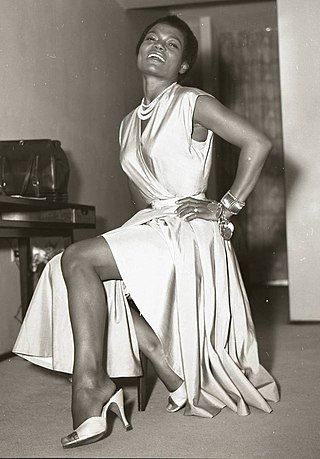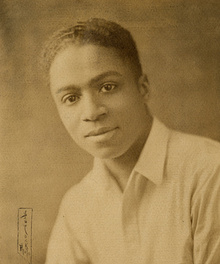
Human skin color ranges from the darkest brown to the lightest hues. Differences in skin color among individuals is caused by variation in pigmentation, which is the result of genetics, exposure to the sun, disorders, or all of these. Differences across populations evolved through natural selection or sexual selection, because of social norms and differences in environment, as well as regulations of the biochemical effects of ultraviolet radiation penetrating the skin.

Human hair color is the pigmentation of human hair follicles due to two types of melanin: eumelanin and pheomelanin. Generally, if more melanin is present, the color of the hair is darker; if less melanin is present, the hair is lighter. The tone of the hair is dependent on the ratio of black or brown eumelanin to yellow or red pheomelanin. Levels of melanin can vary over time causing a person's hair color to change, and it is possible to have hair follicles of more than one color on the same person. Some hair colors are associated with some ethnic groups due to observed higher frequency of particular hair color within their geographical region, e.g. straight dark hair amongst East Asians, Southeast Asians, Polynesians and Native Americans, a large variety of dark, fair, curly, straight, wavy and bushy hair amongst Europeans, West Asians and North Africans, curly, dark, and uniquely helical hair with Sub Saharan Africans, whilst gray, white or "silver" hair is often associated with age.

Eartha Mae Kitt was an American singer and actress known for her highly distinctive singing style and her 1953 recordings of "C'est si bon" and the Christmas novelty song "Santa Baby".

Brown hair, also referred to as brunet (male) or brunette (female), is the second-most common human hair color, after black hair. It varies from light brown to dark hair. It is characterized by higher levels of the dark pigment eumelanin and lower levels of the pale pigment pheomelanin.

Jessie Redmon Fauset was an editor, poet, essayist, novelist, and educator. Her literary work helped sculpt African-American literature in the 1920s as she focused on portraying a true image of African-American life and history. Her black fictional characters were working professionals which was an inconceivable concept to American society during this time Her story lines related to themes of racial discrimination, "passing", and feminism.

The cream gene is responsible for a number of horse coat colors. Horses that have the cream gene in addition to a base coat color that is chestnut will become palomino if they are heterozygous, having one copy of the cream gene, or cremello, if they are homozygous. Similarly, horses with a bay base coat and the cream gene will be buckskin or perlino. A black base coat with the cream gene becomes the not-always-recognized smoky black or a smoky cream. Cream horses, even those with blue eyes, are not white horses. Dilution coloring is also not related to any of the white spotting patterns.

The champagne gene is a simple dominant allele responsible for a number of rare horse coat colors. The most distinctive traits of horses with the champagne gene are the hazel eyes and pinkish, freckled skin, which are bright blue and bright pink at birth, respectively. The coat color is also affected: any hairs that would have been red are gold, and any hairs that would have been black are chocolate brown. If a horse inherits the champagne gene from either or both parents, a coat that would otherwise be chestnut is instead gold champagne, with bay corresponding to amber champagne, seal brown to sable champagne, and black to classic champagne. A horse must have at least one champagne parent to inherit the champagne gene, for which there is now a DNA test.
Identifying human races in terms of skin colour, at least as one among several physiological characteristics, has been common since antiquity. Such divisions appeared in rabbinical literature and in early modern scholarship, usually dividing humankind into four or five categories, with colour-based labels: red, yellow, black, white, and sometimes brown. It was long recognized that the number of categories is arbitrary and subjective, and different ethnic groups were placed in different categories at different points in time. François Bernier (1684) doubted the validity of using skin color as a racial characteristic, and Charles Darwin (1871) emphasized the gradual differences between categories. Today there is broad agreement among scientists that typological conceptions of race have no scientific basis.

The Dutch rabbit, also known as Hollander or Brabander, is easily identifiable by its characteristic colour pattern, and was once the most popular of all rabbit breeds. However, after dwarf rabbits were developed, the popularity of the Dutch rabbit dwindled. Nevertheless, the Dutch rabbit remains one of the top ten most popular breeds worldwide.

Rudolph John Chauncey Fisher was an American physician, radiologist, novelist, short story writer, dramatist, musician, and orator. His father was John Wesley Fisher, a clergyman, his mother was Glendora Williamson Fisher, and he had two siblings. Fisher married Jane Ryder, a school teacher from Washington, D.C. in 1925, and they had one son, Hugh, who was born in 1926 and was also nicknamed "The New Negro" as a tribute to the Harlem renaissance. Fisher had a successful career as an innovative doctor and author, who discussed the dynamics and relationships of Black and White people living in Harlem. This racial conflict was a central theme in many of his works.

Chestnut is a hair coat color of horses consisting of a reddish-to-brown coat with a mane and tail the same or lighter in color than the coat. Chestnut is characterized by the absolute absence of true black hairs. It is one of the most common horse coat colors, seen in almost every breed of horse.
Dael Orlandersmith is an American actress, poet and playwright. She is known for her Obie Award-winning Beauty's Daughter and the 2002 Pulitzer Prize Finalist in Drama, Yellowman.
Black is beautiful is a cultural movement that was started in the United States in the 1960s by African Americans. It later spread beyond the United States, most prominently in the writings of the Black Consciousness Movement of Steve Biko in South Africa. Black is beautiful got its roots from the Négritude movement of the 1930s. Negritude argued for the importance of a Pan-African racial identity among people of African descent worldwide.

"The brown paper bag test" is a term in African-American oral history used to describe a racist discriminatory practice within the African-American community in the 20th century, in which an individual's skin tone is compared to the color of a brown paper bag. The test was used to determine what privileges an individual could have; only those with a skin color that matched or was lighter than a brown paper bag were allowed admission or membership privileges. The test was believed by many to be used in the 20th century by many African-American social institutions such as sororities, fraternities, and social clubs.

Horses exhibit a diverse array of coat colors and distinctive markings. A specialized vocabulary has evolved to describe them.
Brown is a racialized classification of people, usually a political and skin color-based category for specific populations with a light to moderate brown complexion.
Color Struck is a play by Zora Neale Hurston. It was originally published in 1926 in Fire!! magazine. Color Struck won second prize in Opportunity Magazine's literary contest for best play. Color Struck was not staged during the Harlem Renaissance.

The Blacker the Berry: A Novel of Negro Life (1929) is a novel by American author Wallace Thurman, associated with the Harlem Renaissance. The novel tells the story of Emma Lou Morgan, a young black woman with dark skin. It begins in Boise, Idaho and follows Emma Lou in her journey to college at USC and a move to Harlem, New York City for work. Set during the Harlem Renaissance, the novel explores Emma Lou's experiences with colorism, discrimination by lighter-skinned African Americans due to her dark skin. She learns to come to terms with her skin color in order to find satisfaction in her life.
Colorism in the Caribbean describes discrimination based on skin tone, or colorism, in the Caribbean.

The description of populations as white in reference to their skin colour predates and is distinct from the race categories constructed from the 17th century onward. Coloured terminology is occasionally found in Graeco-Roman ethnography and other ancient and medieval sources, but these societies did not have any notion of a white or pan-European race. In Graeco-Roman society whiteness was a somatic norm, although this norm could be rejected and it did not coincide with any system of discrimination or colour prejudice. Historically, before the late modern period, cultures outside of Europe and North America, such as those in the Middle East and China, employed concepts of whiteness. Eventually these were progressively marginalised and replaced by the European form of racialised whiteness. Whiteness has no enduring "true essence", but instead is a social construct that is dependent on differing societal, geographic, and historical meanings. Scholarship on race distinguishes the modern concept from pre-modern descriptions, which focused on skin colour, complexion and other physical traits.














